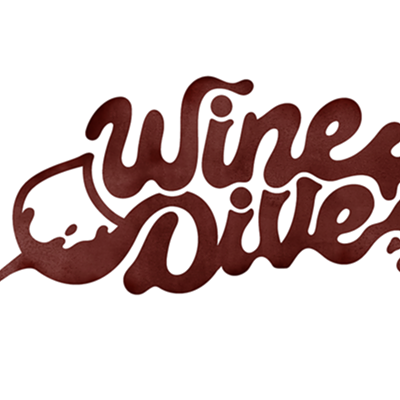In a dark corridor in the Cleveland Metroparks Zoo's Primate, Cat, and Aquatics Building, past the chattering monkeys and the languidly beautiful leopards, gunmetal gray sharks glide back and forth behind a wall of glass.
A gaggle of children stand close to the window as zookeeper Geoff Hall points out the different kinds of sharks inside. A small bleacher is set up on the opposite wall, silent testimony to the fascination the creatures inspire.The shark tank is one of an array of marine exhibits at the zoo, featuring life that comes from as far away as the reefs of northwest Australia and as close as the rivers and lakes of Northeast Ohio. Fields of anemone, 50-year-old Amazon sturgeon, a sea star as lavender as an Easter egg, and small fish that glow sapphire blue and sunshine yellow are among the quietly alluring exhibits you'll find if you can tear yourself away from the chimpanzees' more attention-grabbing antics.
The Cleveland Aquarium in Gordon Park on East 72nd Street closed in 1986 after 32 years. It had been funded meagerly by the city and relied heavily on dwindling income from attendance. So the exhibits were shipped to the Cleveland zoo, where they remain today. "It's utilized on a lot of levels by a lot of people," says Hall, noting that school groups and ichthyology classes routinely visit. But he admits that it was always intended to be a stopgap. Everyone just assumed there would be another aquarium someday.
"It's part of the cultural heritage of the city. It was something we had and lost," says Dr. Chris Bonar, who had been an associate veterinarian at the Cleveland zoo until taking a job with the Dallas World Aquarium in May. He remains president of Cleveland Aquarium Inc., which has put forth one of three competing proposals to restore aquatics as a stand-alone attraction in Northeast Ohio.
All the proposals insist that an aquarium is vital to the region. While all of them talk — with varying degrees of focus, urgency, and passion — about the need to educate people about the importance of marine life, all of them also dangle the promises of economic development that seem essential to attract the support of people with influence and money and no particular interest in fish.
Two of the proposals look to the lakefront as the natural location, positing that an aquarium is essential to waterfront development. Proponents use phrases like "help turn the lakefront into a people-oriented destination." Similar words once proliferated in reference to the Rock and Roll Hall of Fame, whose unique character was supposed to attract restaurants, nightclubs, retail — maybe even hotels on the waterfront. Fifteen years later, Rock Hall visitors can't even get a sit-down meal in the area.
Meanwhile, the third proposal — recasting an historic building in the Flats as a modestly sized aquarium — appears designed to turn around a privately owned complex that's never been quite as successful as promised when it opened in the late '80s.
By the early '90s, when the Rock Hall's proposed location had been shifted from behind Tower City to North Coast Harbor, and the Great Lakes Science Center was added to the drawing board, civic leaders were pushing for an additional lakefront project called Great Waters Aquarium. Organizers doled out more than $3 million on studies and architectural plans. But changes in political leadership, uncertainty about the Port Authority's intentions, and shifting priorities — thanks to Art Modell's infamous departure, the aquarium was leapfrogged by the new Browns Stadium — ground that initiative to a halt.
Since then, despite passionate visions of what an aquarium would bring to the region in furthering conservation, research, education, and especially tourism, the wheels have ground slowly.
Bonar came to the zoo from private practice in 1994, just as the aquarium hoopla was subsiding. Toward the end of the '90s, he and his colleagues felt that, with the stadium built and the dust settled on that project, maybe it was time to start pushing an aquarium again. "We talked to people involved in the Great Waters project and said, 'How do we resurrect it?'" he recalls. "They said, 'The perception is, we failed; you need to make your own tracks.' So we formed a different nonprofit with a different name."
Because their project involved so many people active in the field of aquatics, including former Cleveland Aquarium director Dan Moreno and Cleveland Metroparks Zoo aquarium biologist Nicholas Zarlinga, it garnered support from marine-interest groups. Despite the depth of expertise behind it, Cleveland Aquarium Inc. has spent the last decade looking for money at the same time other museum building and expansion projects, including the Western Reserve Historical Society and the Cleveland Museum of Art, have run into problems of their own.
Since late 2005, Cleveland Aquarium Inc. has had a full-time executive director, Tim Ryan, focused on development and fundraising. He brought both a layman's passion — "I had aquariums as a kid; I remember fondly going to the old aquarium" — and business experience in sales, distribution, and manufacturing.
"The reason I joined the group is they are dedicated to conservation, research, and education; they're dedicated to bringing back a piece of our heritage," Ryan says. "We used to have an aquarium; we used to have Sea World. Now we don't. It's about the interaction with live animals as opposed to inanimate objects. Plus we're on the Great Lakes. I think of the protection of the water of the world as part of our mission."
But, he recognizes, you don't move a project forward simply on ideals. For most people who control the purse strings — public and private — jobs and revenue creation make more compelling stories than marine ecostructure education. "It's something I love, but I look at it as economic development. It will be fun and engaging, but it isn't just going to be looking at tanks and taking home a stuffed animal. Aquariums are a social gathering place."
They usually point first to the National Aquarium, which anchors Baltimore's Inner Harbor. It opened in 1981 and draws a million and a half visitors annually — the largest tourist attraction in Maryland. Some claim it was responsible for the area's renaissance.
But the zoo's Hall cautions against such rosy projections.
"I used to work at the National Aquarium in Baltimore in the early-mid '90s," he says. "It's a stellar attraction, but I think most city planners would agree it didn't turn around the Inner Harbor area. High-end retail, upgrading safety — a bunch of things were done simultaneously to turn a rat-infested wharf into a tourist attraction."
And while Baltimore's aquarium, the Monterey Bay Aquarium in California, and Chicago's venerable Shedd Aquarium each attract millions of visitors a year, others haven't been nearly so successful. Camden, New Jersey's Adventure Aquarium failed and was sold to a private owner. And in a 2006 Associated Press story, officials at the Atlanta and Chattanooga aquariums admitted that the opening of the Atlanta facility the previous year likely cut Chattanooga's attendance. That suggests that, like convention centers, aquariums may be intended as economic drivers, but ultimately end up being overbuilt.
About two years ago, architect Bruce Grulke and businessman Russ Hill split off from Cleveland Aquarium Inc. to launch their own initiative, Rock Harbor Aquarium. Grulke, who specializes in sustainable building, says the parting was mainly over disagreements about methods of funding, and he sounds hopeful the two groups can get back together. He'd like to fund the project through renewable energy credits.
Based in Norfolk, the Berea native says he was brought aboard by Hill and attracted by his sense that the project was being driven from within the area. "Cleveland always looks to outside for answers, and answers have to come from inside the community," he says. "It seemed to me someone inside the community was saying we need this."
"It's a place of learning, a repository of knowledge and culture," he says, envisioning also an aquarium that would be a model for renewable energy practices. "But all anybody was interested in was how are you going to pay for it?"
In fact, cost is a major stumbling block. According to Geoff Hall of the zoo, "The per-foot cost of a public aquarium is greater than anything else. It's expensive to build, expensive to run, expensive utilities." That's why even though a stand-alone aquarium at the zoo is on the discussion table, it's not likely to get to the top of the list.
"Because they're so expensive," Hall adds, "they need a large number of people paying high admission prices."
A quick look at aquarium admission prices across the country bears that out. A regular adult admission at Shedd is $26.95. At both the Monterey and Baltimore institutions, it's an eye-popping $29.95. You can visit the Cleveland Metroparks Zoo for $10 — and see bears, kangaroos, and elephants along with the fish. The Rock Hall, with a price tag of $22 ($18 for county residents), is one of the area's top-drawing tourist attractions — and it just welcomed its eight-millionth visitor after nearly 15 years.
Unlike previous proposals, all of which revolve around new construction on the lakefront, theirs is slated to be housed inside the Powerhouse, the historic brick building on the West Bank of the Flats.
Jacobs was working with a New Zealand company that has developed nearly two dozen marine attractions around the world, primarily in Asia. WKYC-TV reported in June 2009 that Jacobs would open its aquarium this summer. The project has received a $2 million loan from the city, although its cost, size projections, and other particulars have fluctuated. A June 2009 Plain Dealer article reported, "[County director of development Paul] Oyaski said the [Jacobs] team has about half of the project's approximately $9 million cost lined up. Jacobs Investment and Marinescape is looking for the city, state and county to pick up the other half, Oyaski said." More recent reports have cited higher cost figures, and the other projects have cited construction costs ranging from $50 million to $100 million. That doesn't even factor in the high operational expenses. (Jacobs Investments declined to talk about the project before plans are firmed up.)
It's hard to see how the Powerhouse — rescued from ruin, rehabbed, and opened as an entertainment complex in 1989, only to watch the nightlife that surrounded it crumble over the next decade — could be repurposed for something with such specific structural needs as an aquarium. Jacobs' people have suggested that the Nautica Stage, which in recent years has lost events to the Time Warner Cable Amphitheater across the river, could house marine shows. That would certainly require some expensive reconfiguring. Perhaps most bizarre, a Jacobs spokesman told WKYC in May that they planned to use the Powerhouse smokestacks to house horizontal walk-through attractions called "sea tubes."
Most of the dedicated aquarium people take a dim view of Jacobs' proposal, seeing it as an effort to prop up their own properties. They find the Powerhouse's off-the-beaten-path location less appropriate and less beneficial than the waterfront, and its 50,000 square-foot size inadequate. (Baltimore's aquarium is 250,000 square feet; the other Cleveland proposals are each more than 100,000 square feet.)
"Everyone understands it's Jacobs' perfectly legitimate effort to prop up his real estate," says Russ Hill. "It's not the same as doing a nonprofit, world-class museum.
"This is a project for the people of the region. This isn't a project for developers necessarily. Cleveland is a lakefront city. It's astonishing that you can't even have a meal on the water in Cleveland. It is our greatest asset, and it's our most ignored asset. An aquarium would help open up the lakefront for people."
If nothing else, it will open up their wallets again.
Send feedback to [email protected].












